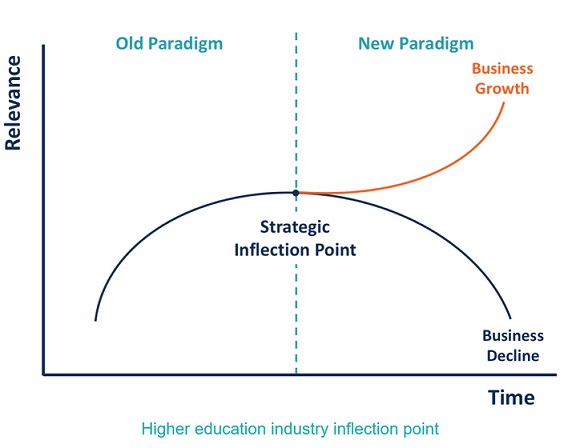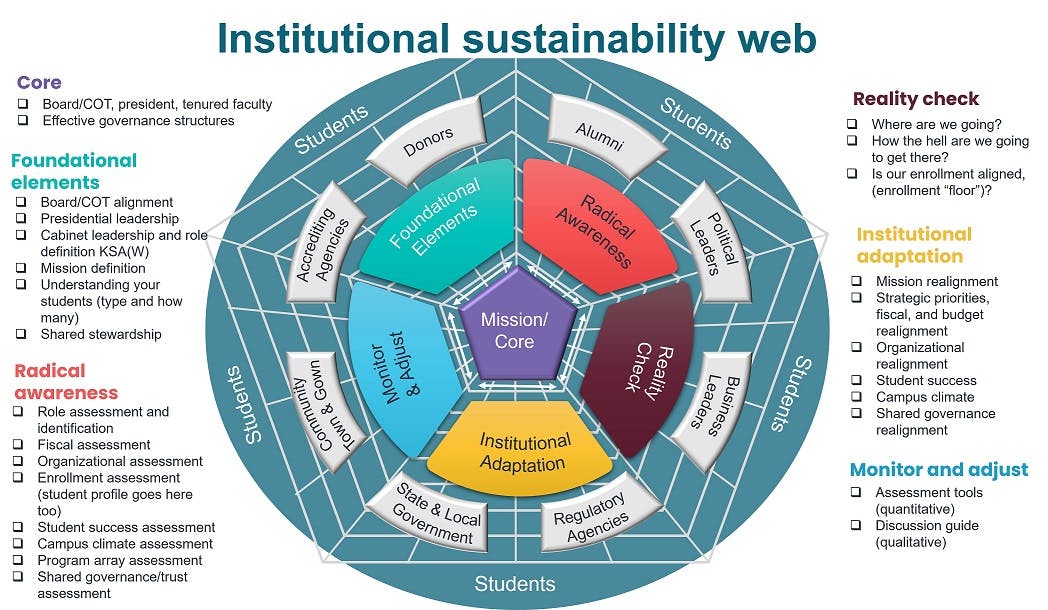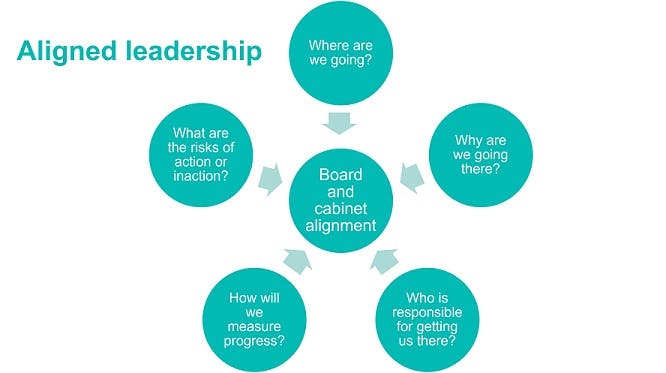
Article
Driving an institutional sustainability journey that honors realities and respects stakeholders
Key takeaways from the NACUBO 2023 Annual Meeting
At last month’s National Association of College and University Business Officers (NACUBO) annual conference, Baker Tilly Higher Education Managing Director Christine Smith facilitated a panel discussion with institutional chief business officers (CBOs) and Chief Academic Officers (CAOs) on how to drive an institution’s journey toward sustainability. The panel was comprised of members of a joint NACUBO/Baker Tilly think tank project and others who have recently driven complex and impactful change at their institutions.
The panel highlighted the importance of proactively assessing realities and challenges; intentional initiative design for leadership alignment and effective stakeholder engagement; and best practices relative to assessing and addressing misalignment in strategy, expectations and resources.
Higher education realities and challenges

A key message from the project and the panel is that the industry is at an inflection point — one where a failure to act in response to the changing market or environment will likely result in the inability to reverse a decline in institution performance; whereas, the ability to adapt or act on a timely basis can result in positive outcomes including competitive positioning. With 20% over capacity and one-third of all U.S. institutions operating with a structural deficit, operating in the status quo does not equate to action.
The discussion focused on how business officers can help as key members of the cabinet to ensure the right conversations are occurring at the right time using the right data.
The panel reflected on the NACUBO/Baker Tilly Path to Sustainability and Scale project, which calls for a holistic view of institution health and outlines the tools required to force the right discussions and drive critical decisions. The toolkit includes a series of performance indicators across essential facets, including fiscal health, that provide a gauge of where the institution needs to focus change or double down its investments. The indicators are presented cumulatively in a heatmap to assist institution leaders to focus their transformation efforts. The toolkit also includes a discussion guide intended to frame important conversation topics when viewing the performance results.
Additionally, the toolkit is intended to frame all aspects of transformation that are key — and describes the interplay between the factors that must occur for the transformation to be impactful.

Like a web — the analysis of one factor may drive a change relative to another, which then requires a mid-course change in another. The fluidity and interdependence of decisions requires consistent assessment, action and reaction.
Effective leadership alignment, stakeholder engagement and governance
Trust building and effective communication are key to successful leadership alignment, stakeholder engagement and intentional governance, which results in effective and strategic transformation.

The panel noted how collaborative and aligned leadership asks key questions, such as:
- Where are we going?
- Why are we going there?
- Who is responsible for getting us there?
- How will we measure progress?
- What are the risks of action or inaction?
A regular and recurring cadence of asking these questions is key for timely decision-making.
Other leading practices the panelists outlined included the importance of common understanding and proactive education. For example, the CAO and chief financial officer must first decide what the data represents to be on the same page when making decisions about the institutions based on that data. Similarly, providing foundational education and knowledge about fiscal and institution performance topics and realities allows for a path to buy-in across stakeholder groups.
Stakeholder engagement is encouraged early in the transformation process and needs to be a consistent and continuous effort. The speakers pointed out that trust in and across higher education is at an all-time low and is the most critical element for success in these initiatives. They encouraged seeking the voice of the entire college or university community — including outside campus’ boundaries, such as from local community leaders, legislators and other engaged stakeholders, and focusing on relationship and advocacy building to support clearly defined institution and student outcomes.
Summary
Given the context of the industry's inflection point, panelists agreed that a student-focus is the most important aspect of navigating a transformation initiative for a sustainable future. Effective approaches for such an initiative require leaders to focus on student-centered impacts that align with stated institution strategic priorities within the context of:
- A clearly defined and well-equipped governance structure
- An objective baseline assessment and understanding of the realities, performance gaps and desired outcomes
- Intentional and timely communications and accountability frameworks
- A data-driven approach for decision-making
- A systematic approach to develop an aligned and impactful leadership team/cabinet
- Investment in broad-based stakeholder engagement and constant consideration of the “human element”
To ensure your institution is taking the actions needed to position your college or university for stability and enhanced student outcomes, use this information (and the highly anticipated Baker Tilly/NACUBO toolkit) to support making important pivots in your institution’s strategy and operating model. Contact our higher education specialists to get started.
